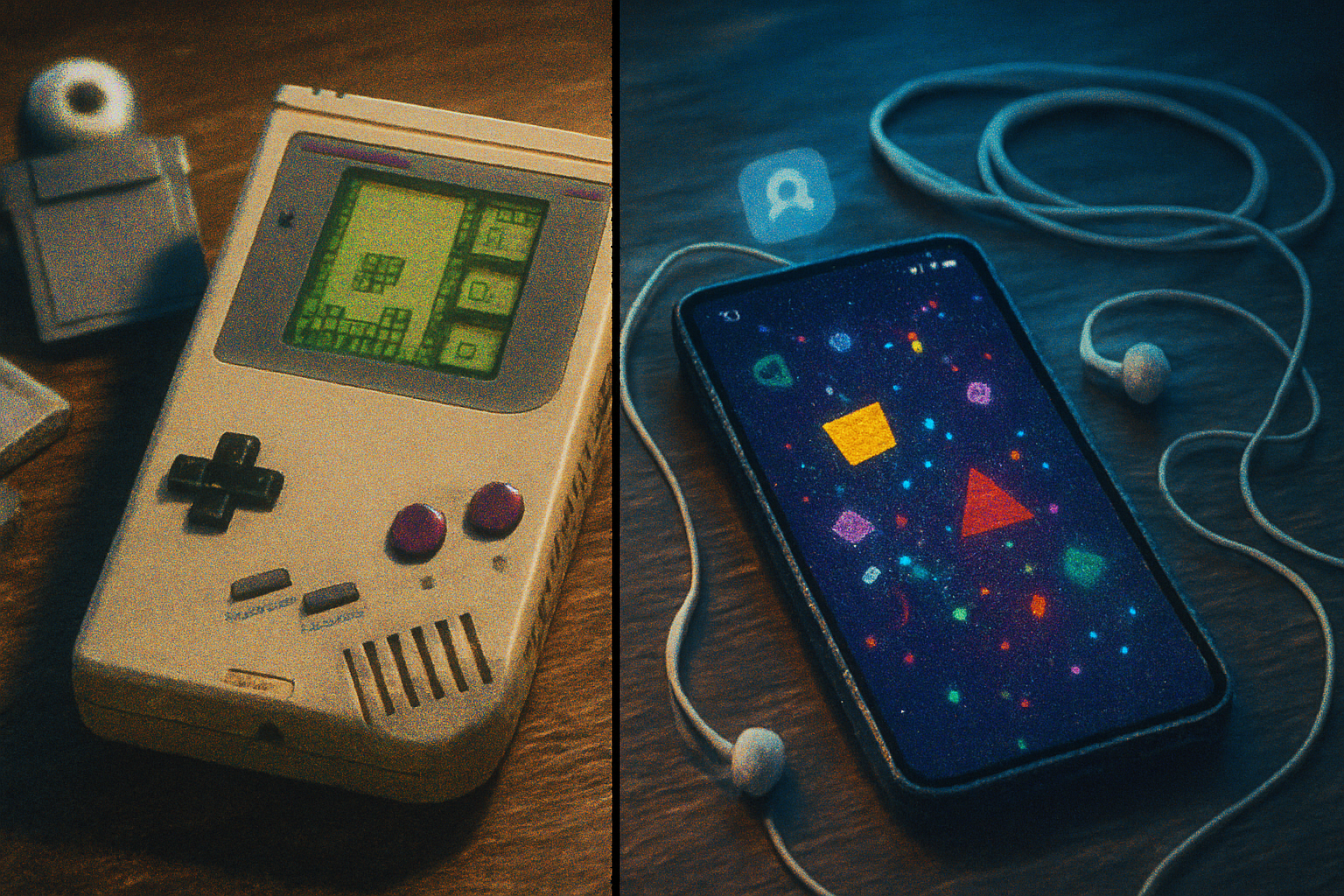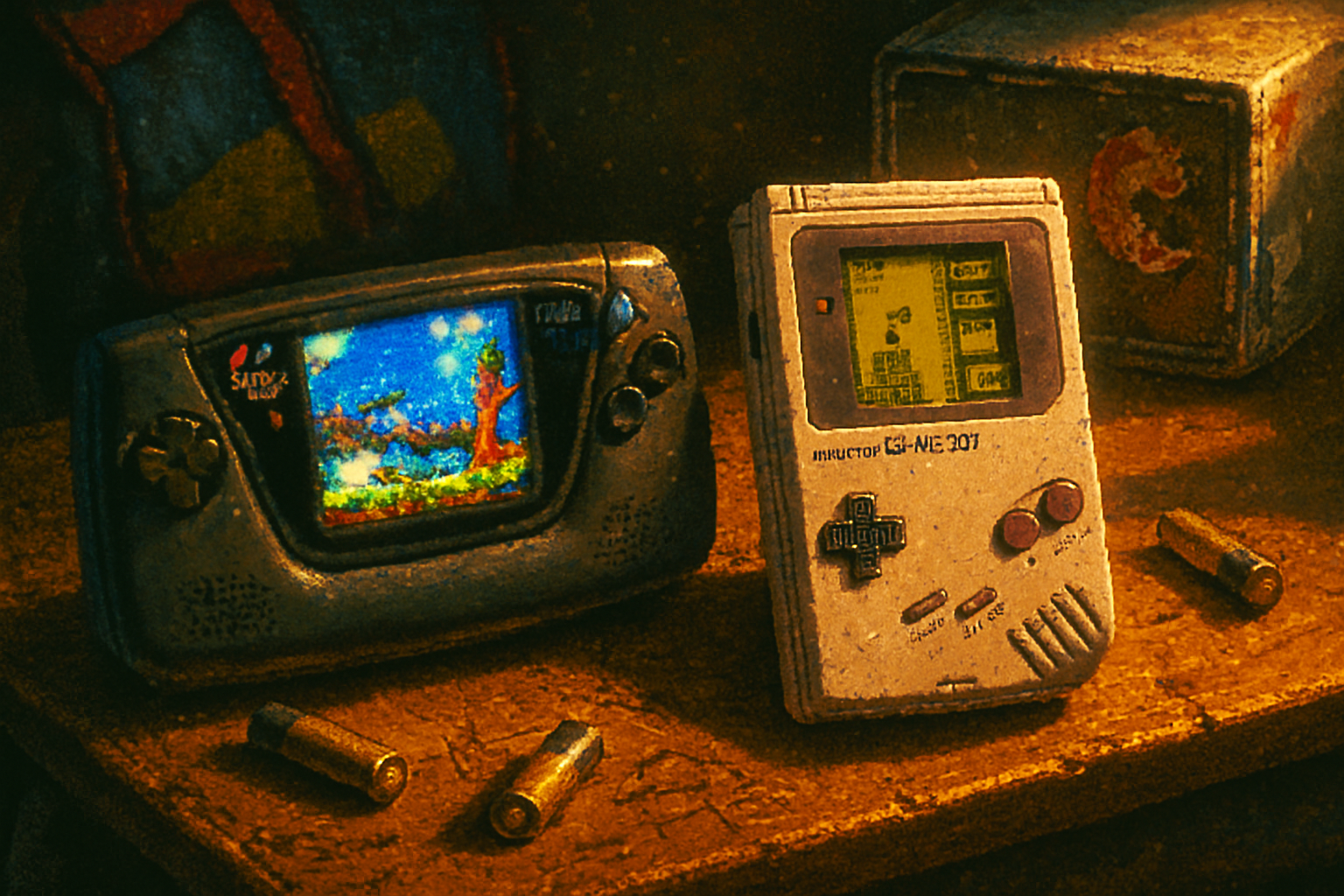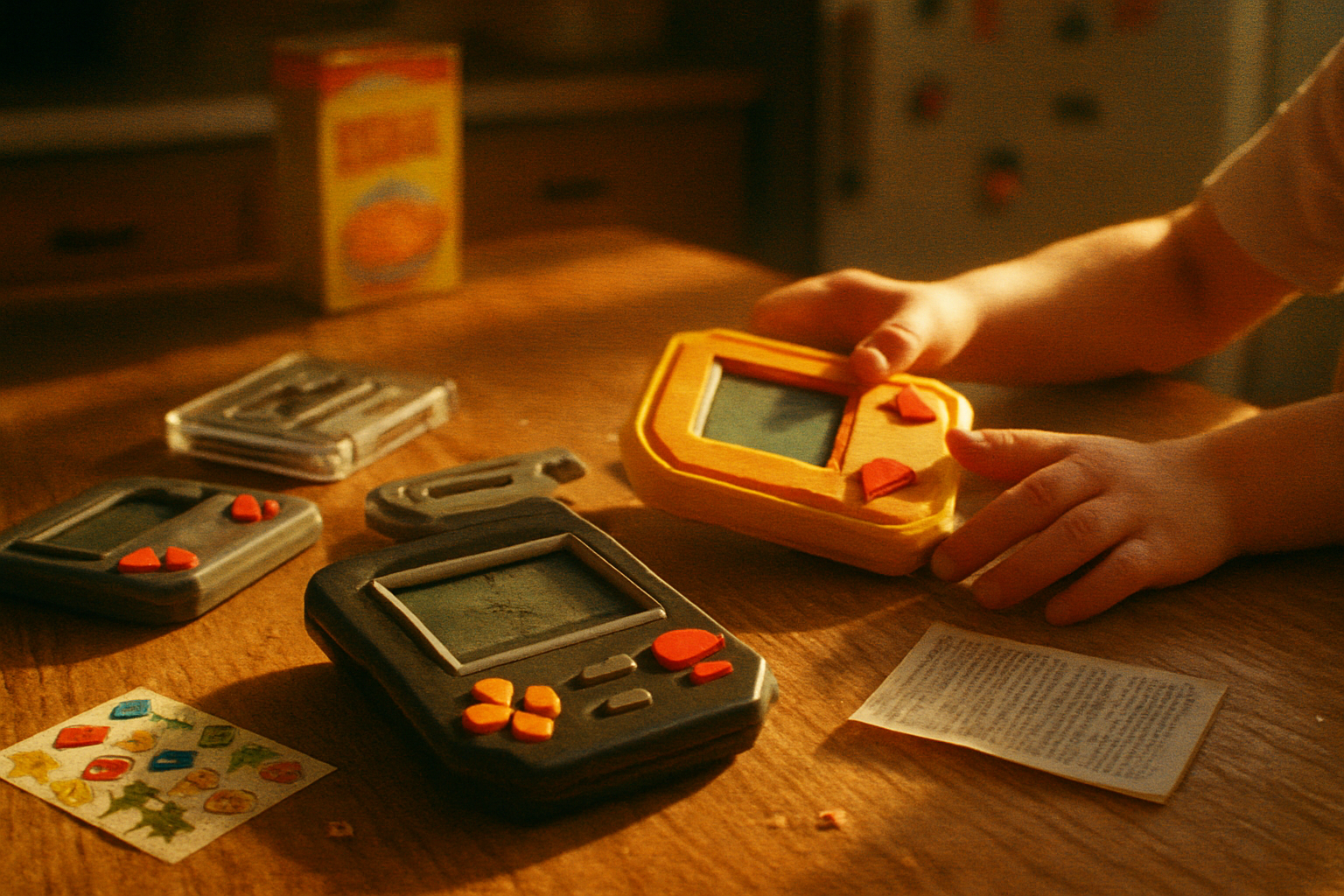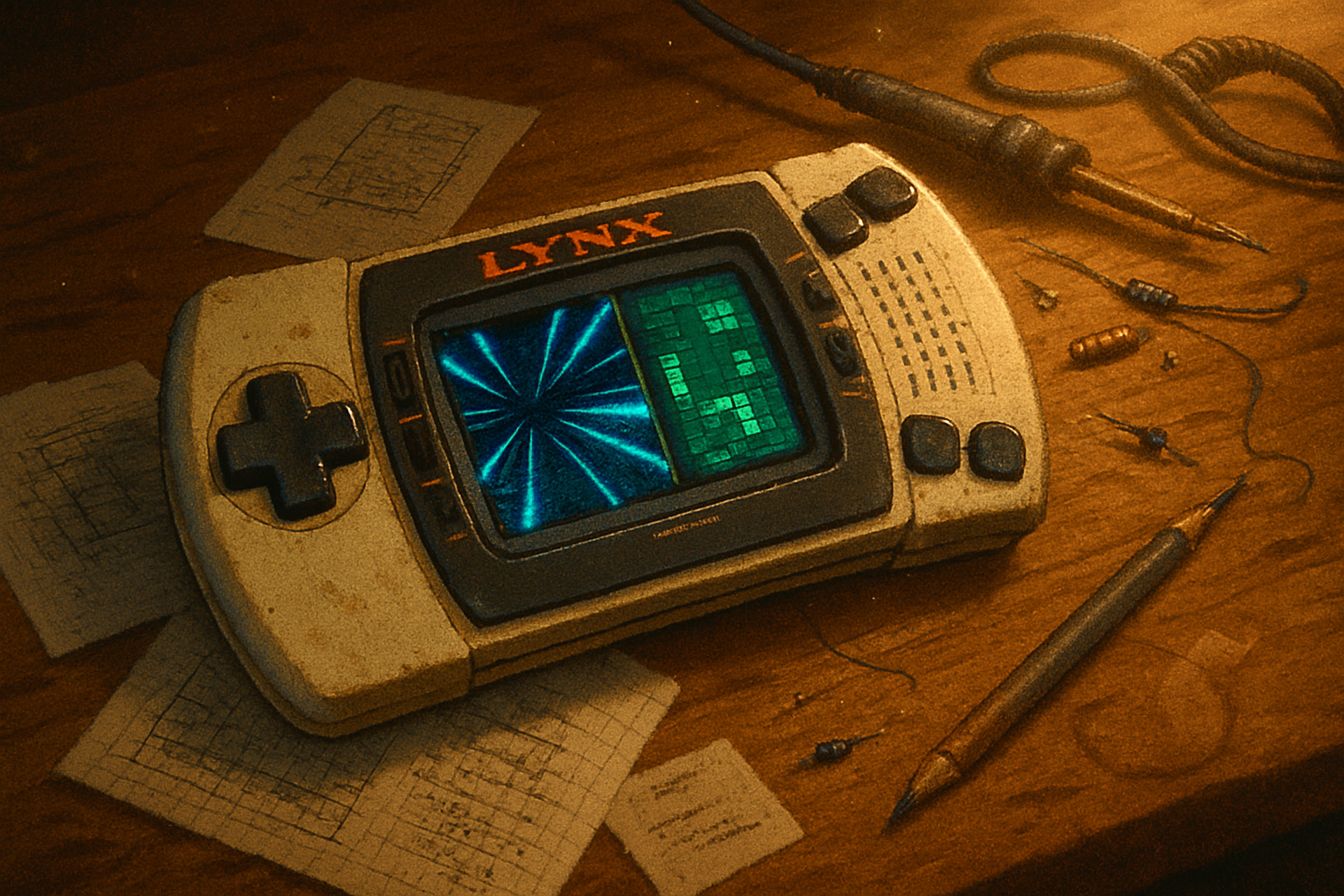· culture · 8 min read
The Game Boy Revolution: How 8-Bit Nostalgia Shaped Modern Gaming
How a grey plastic rectangle with a green screen re-wired our expectations for play. The Game Boy's hardware and design philosophies created templates-game loops, aesthetics, social play-that still define mobile and indie games today.
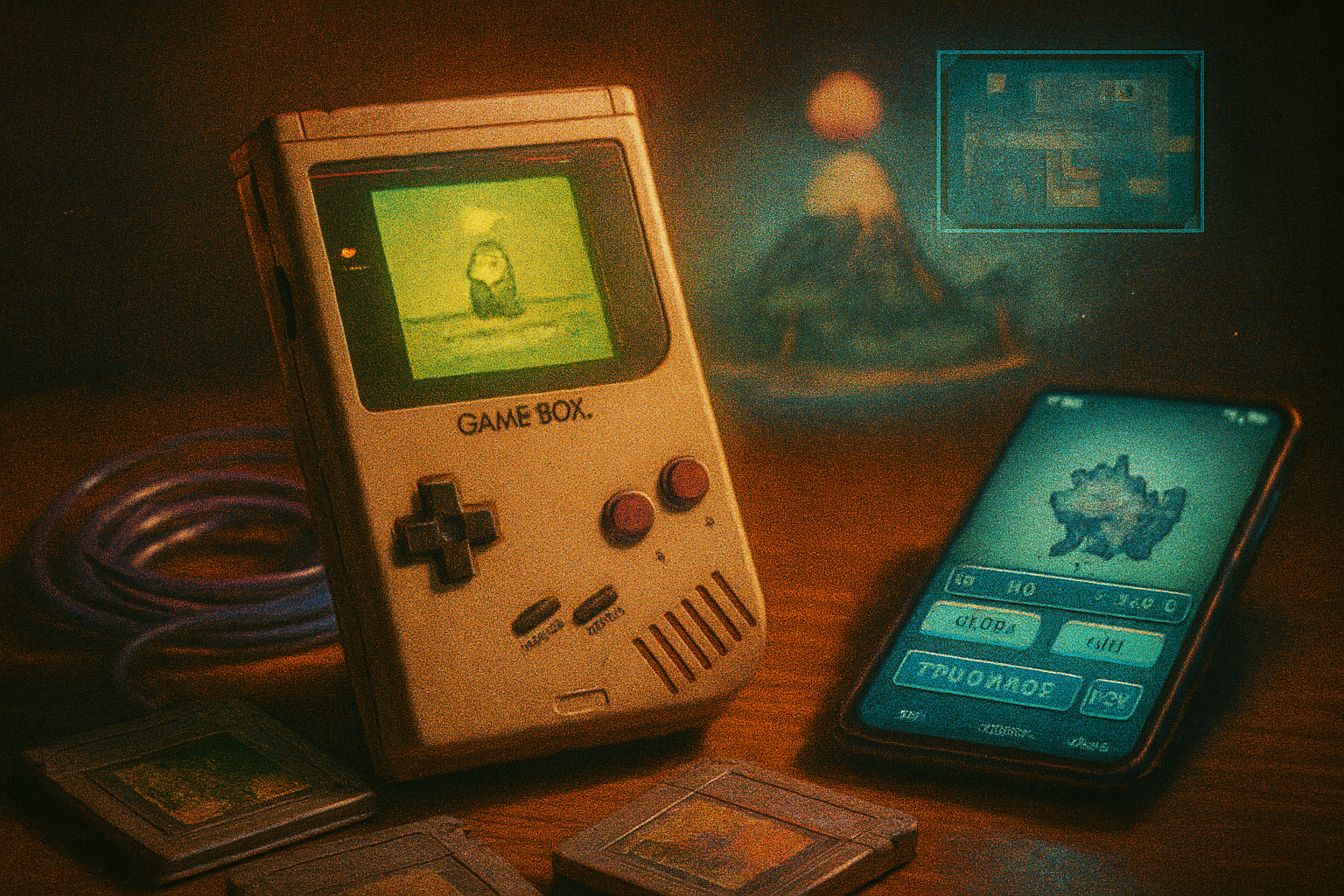
It begins with a scene most of us remember: a cramped classroom, a long family car ride, a bored lunch break - and a little grey brick glowing with green pixels. You didn’t just play a Game Boy; you smuggled an alternate life into your pocket. It was small, stubbornly simple, and somehow impossibly addictive. That tactile moment-sliding a cartridge, feeling the hollow click of the D-pad-shaped an entire generation of designers and players.
The Game Boy was not the first handheld. It wasn’t even the most technologically impressive device of its era. But it was the one that stuck. And the reason it stuck is instructive: the device’s constraints-battery life, screen, sound, and cartridges-forced designers to distill games to their essence. That distillation is the secret sauce behind many of today’s mobile hits and indie classics.
The design DNA: Why constraints became strengths
Nintendo’s Game Boy launched in 1989 and sold over 100 million units across its life cycle Game Boy - Wikipedia. Its victory was not raw technical power. It was discipline.
- Monochrome display with low refresh. Designers couldn’t rely on spectacle; they had to craft mechanics that were immediately understandable and deeply replayable.
- Portable battery life. Longer sessions, on the go, led to short, satisfying play loops. You could finish a puzzle or grind a single encounter between stops on your commute.
- Simple input - a D-pad and a couple of buttons. Complexity had to arise from design, not from a thousand commands.
- Cartridges with persistent saves. Save points and persistent progression made long-term goals-collecting, leveling, discovery-work even in broken-up play sessions.
These constraints created habits. Developers learned to prioritize clarity, repetition that felt fair, and rewards small enough to be satisfying even in brief sessions. Sound familiar? That’s the blueprint for modern mobile games.
From tetrominoes to tile swipes: Tetris and the mobile puzzle DNA
Tetris is the archetypal Game Boy story. Peter Kramer famously bundled Tetris with the Game Boy, and the marriage made both immortal. The game’s tight rules and escalating pace are the perfect match for quick sessions. That two-minute loop-drop, rotate, clear-translates directly into modern puzzle apps.
Look at the lineage:
- Classic Tetris -> mobile clones and variants -> Candy Crush-style match-3s (same addictive, escalating rhythm).
- The prioritization of single-screen clarity and instant feedback moved directly into casual mobile UX.
Tetris proved a simple, elegant mechanic could sustain a global phenomenon. Mobile studios-big and small-copied the lesson. The fundamental question shifted from “how can a game be more complex?” to “how can a mechanic be more compelling?”
(Reference: Tetris - Wikipedia.)
Pokémon: The ultimate portable social RPG
If Tetris was the game-loop textbook, Pokémon was the social manifesto. Launched on the Game Boy in 1996, Pokémon Red and Blue introduced catch-battle-trade loops that are practically an algorithm for long-term engagement: collect, train, compete, repeat Pokémon Red and Blue - Wikipedia.
Key innovations that echo today:
- Collection as core loop. Beating a level is good. Catching them all never ends.
- Portable social play via the Link Cable. Trading and battling created emergent social motivations long before online matchmaking was ubiquitous.
- Scalable depth - mechanics were simple to pick up but had depth for the committed.
Fast forward to mobile: Pokémon GO is a direct descendent-same IP, but dialed into GPS and AR. Its success shows how the Game Boy-era ideas (collectibility + social play) scale into networked systems. The Game Boy taught designers that social interaction-trade, rivalry, shared story-could make an otherwise simple loop into a cultural phenomenon.
(Reference: Pokémon GO - Wikipedia.)
Link’s Awakening, Metroid II, and the lineage of adventure
The Game Boy compressed large worlds into tiny screens. That compression forced tight map design and emergent exploration cues.
- The Legend of Zelda - Link’s Awakening used clever puzzles and memorable set pieces to make a tiny cartridge feel epic. Its recent Switch remake underlines how strong the original design was; you can modernize graphics, but the loop survives
- Metroid II - Return of Samus took atmosphere and limited resources and turned them into a claustrophobic hunt. The Metroidvania resurgence owes a lot to those early lessons about compact level design and item-gated progression
These games taught developers how to hint at secrets, stitch world design into short play sessions, and reward curiosity. That’s the hardcore cousin to the casual puzzle loop: longer-term exploration packaged into digestible, repeatable chunks.
The hardware features that anticipated modern UX
A few physical elements of the Game Boy echo in modern devices and design choices:
- D-Pad simplicity -> Touch controls that emphasize single-thumb play. Mobile games that limit required gestures to one or two inputs borrow the ergonomic wisdom of the Game Boy.
- Link Cable -> local multiplayer and early networking lessons. It showed the demand for social features even before ubiquitous internet made them easy.
- Battery-first hardware design -> durable, power-efficient phones that prioritize long play.
- Game Boy Camera & Printer -> early experiments in user-generated content and social sharing. The camera let players create avatars and jokes with low-fi charm, prefiguring the selfie culture that fuels social games.
(Reference: Game Boy Camera - Wikipedia, Game Boy Link Cable - Wikipedia.)
Pixel aesthetics and the indie boom: nostalgia as language
The Game Boy’s 2-bit aesthetic-a palette of greens, blacks, and dithering-created a visual shorthand. Today, pixel art is a conscious style choice, not a technical limitation. Indie developers use it as a semiotic device: a short-hand for clarity, for honesty, for a connection to play’s formative years.
Notable examples:
- Undertale - an indie RPG that wears its 8-bit inspiration on its sleeve; the moral and mechanical playfulness echoes EarthBound and other cartridge-era storytelling [Undertale - developer interviews].
- Shovel Knight - though more NES in inspiration, the game trades in the same nostalgic currency-tight mechanics, readable sprites, and music that owes as much to chiptunes as to rock.
- VVVVVV and Downwell - minimal controls, repeated failure as learning, and bite-sized loops. Downwell’s vertical design feels like a pocket arcade born for a handheld.
These games didn’t just copy the visuals. They copied the discipline: concise systems, instantaneous feedback, and an aesthetic that communicates playability at a glance.
Specific lineages: from GB classics to modern heirs
Let’s name the chains of influence explicitly:
- Pokémon Red/Blue -> Pokémon GO, and dozens of monster-collection indie titles. The social/collect loop is now a mobile genre.
- Tetris (Game Boy bundle) -> endless mobile puzzle variants; the match-3 economy; tile-based casual UX.
- Link’s Awakening -> Zelda-like adventure design, bite-sized dungeons in handheld and mobile titles; Switch remake proves the architecture survives modernization.
- Metroid II -> Metroidvania design, heavy influence on indie exploration platformers like Hollow Knight.
- Kirby’s Dream Land -> approachable platforming with simple controls and toy-like design; echoes in modern family-friendly platformers.
- Game Boy Camera -> user-generated content in mobile apps and social features in casual games.
How modern developers borrow from the Game Boy playbook
Here are repeatable lessons today’s studios use:
- Design for interruption. Assume players will play in 1–10 minute bursts.
- Prioritize readability. Sprites and UI must communicate intent at a glance.
- Build social hooks into mechanics. Trading, asynchronous challenges, and shared goals create stickiness.
- Reward short-term wins while supporting long-term goals. Microprogression is essential.
- Embrace limits. Constraints force elegance.
Those prescriptions are not moralizing; they’re pragmatic. The Game Boy didn’t invent fun. It taught us how to make fun efficient.
A word about nostalgia (and its dangers)
Nostalgia is a powerful engine, but it’s also seductive and lazy. A pixel palette does not automatically produce good design. Too many products mistook aesthetic shorthand for substance. The lesson from the Game Boy is subtler: it’s about design clarity, not visual mimicry.
Good nostalgia uses the old language to say something new. Bad nostalgia repeats the same sentences forever.
What the future borrows (and what it doesn’t)
We should expect more lineage, not repetition. AR, haptic feedback, and always-on social layers won’t erase the Game Boy’s lessons; they’ll reframe them. Imagine:
- Pocket-scale game loops with geolocation and social graphs (Pokémon GO, but smarter).
- Indie titles that use ultra-simple inputs to justify complex emergent gameplay.
- Procedural content that preserves the compactness of cartridge-era level design while offering infinite novelty.
What won’t come back-nor should it-is literal technical limitation. We don’t need to return to green-screen restrictions to learn clarity. But we can rediscover the virtue of constraint: choose what to omit as ruthlessly as what to include.
Conclusion: why the Game Boy still matters
The Game Boy was a cultural scalpel. It cut away distractions and forced designers to ask the fundamental question: what makes this fun? That question produced infectious loops-Tetris, Pokémon-and design habits-short sessions, persistent progress, social play-that define today’s mobile and indie landscape.
Play a modern mobile hit and you’ll feel its ancestors: the click of a D-pad, the tiny cartridge bounce, the green wash of a pocket screen. The hardware is gone. The lessons remain. The revolution wasn’t a single machine; it was a way of seeing games as something that could fit in a pocket and your life.
If you want to understand modern gaming, start in your hands. There’s still a Game Boy in them.
References
- Game Boy - Wikipedia: https://en.wikipedia.org/wiki/Game_Boy
- Tetris - Wikipedia: https://en.wikipedia.org/wiki/Tetris
- Pokémon Red and Blue - Wikipedia: https://en.wikipedia.org/wiki/Pok%C3%A9mon_Red_and_Blue
- Pokémon GO - Wikipedia: https://en.wikipedia.org/wiki/Pok%C3%A9mon_GO
- The Legend of Zelda - Link’s Awakening - Wikipedia:
- Metroid II - Return of Samus - Wikipedia:
- Game Boy Camera - Wikipedia: https://en.wikipedia.org/wiki/Game_Boy_Camera
- Game Link Cable - Wikipedia: https://en.wikipedia.org/wiki/Game_Link_Cable
